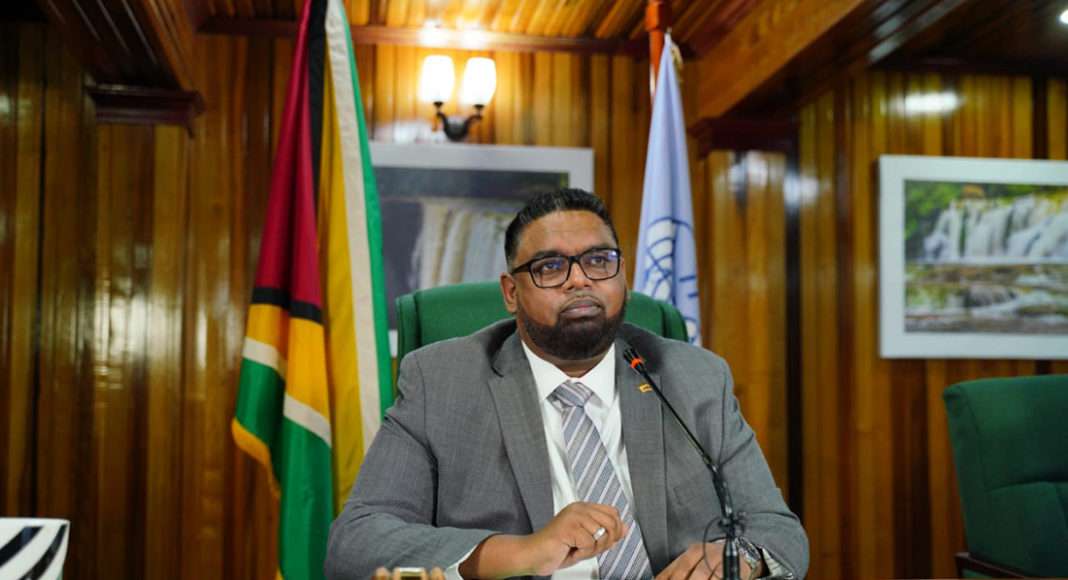The preservation of Guyana’s forests and adherence to the country’s Low Carbon Development Strategy (LCDS) in order to combat climate change and lower carbon emissions is a critical objective of the the new oil producing country.
On Thursday, President Irfaan Ali said that the country remains committed to its Low Carbon Strategy, noting, “Guyana proudly accepts its share of responsibility for climate action, fighting the pandemic, and advancing along the path to sustainable development.”
He was at the time addressing the Virtual National Flagship Event, in Commemoration of Guyana’s Chairmanship of the G-77 and China, which was held under the theme “Maintaining a Low Carbon Development Path towards the 2030 Agenda in the Era of COVID-19.”
This statement comes at an important juncture–one where Guyana is now an oil producing nation with a targeted production of 750,000 barrels per day by 2025/6 and peak output of around 1.4 million barrels per day by 2035.
Two years ago, the United Nations Resident Coordinator to Guyana, Mikiko Tanaka had warned that with Guyana becoming an oil producer, the preservation of the country’s carbon sink is of great importance.
“With the production of oil and gas in the near future, Guyana’s contribution to overall emissions may increase. Urbanisation will probably accelerate in line with global trends. As such, the importance of Guyana’s forests in their role also as a carbon sink will also increase as will efforts to transform Guyana’s consumption, production, and energy use into sustainable and meaningful activities,” she had said.
A carbon sink is anything that absorbs more carbon than it releases as carbon dioxide, and Guyana’s vast forests fall under this category as it reduces the carbon emissions into the atmosphere when the trees absorb the carbon. In fact, under the ‘Reducing Emissions from Deforestation and Forest Degradation’ (REDD+) deal, the Kingdom of Norway signed an agreement with Guyana in 2009 to pay US$250 million over five years for Guyana’s performance on limiting emissions from deforestation and forest degradation. In other words, the country is being paid not to chop down their trees.
“Guyana as a net carbon sink, is ‘particularly vulnerable’ to climate change because of its geography and historical settlement patterns,” the Guyanese President told the virtual gathering, noting that the Low Carbon Development Strategy is aimed at transforming Guyana’s economy to better deliver greater socio-economic benefits to the people by following a low carbon development path while at the same time mainstreaming climate resilience.
“As part of the LCDS, and working in partnership with the Kingdom of Norway, Guyana was able to develop and implement one of the first national scale payment for forest climate services through avoided deforestation and sustainable management of our forest resources,” the President said. “We remain committed to advancing the LCDS and to collaborate with international partners to expand our work on REDD+ and payment for forest climate and ecosystem services.”
The government has said it intends to use revenues from oil production to boost other sectors of the economy such as agriculture and infrastructure and will also utilize these proceeds to further the country’s low carbon agenda.
Already, plans are under way to pipe natural gas to shore as a cleaner and cheaper alternative to heavy oil which is currently being used for power generation in the South American country.




